The "Merville: House in the Park" residential complex, built on a project by the architect Goncalo Byrne and the landscape architect Joao Ferreira Nunes, stands in the green of a pine forest of over 50,000 square meters.
Characterized by the 24-storey tower built with a load-bearing structure in reinforced concrete (the special foundations, made with 40 m deep bored piles, guarantee the stability of the structures in vertical elevation) Merville was born as an urban redevelopment intervention whose main theme is to be the representation of the quality of life understood as harmony between man and nature.
Particular attention has been paid to the fundamental values of eco-sustainable construction through the use of biocompatible materials with high energy savings, as well as natural air conditioning systems and renewable energy sources.
View from the internal garden with the swimming pool and the residential buildings in the foreground. In the background, the large glass tower.
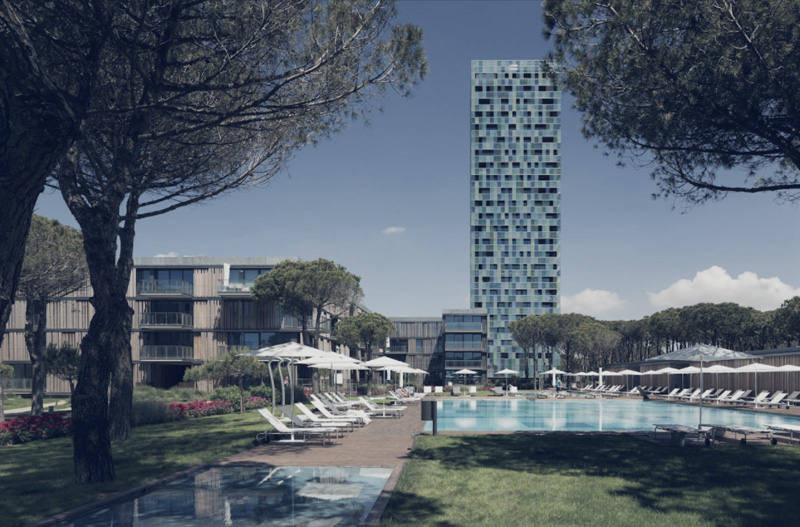
View of residential buildings with their wooden cladding as opposed to the glass of the tower.
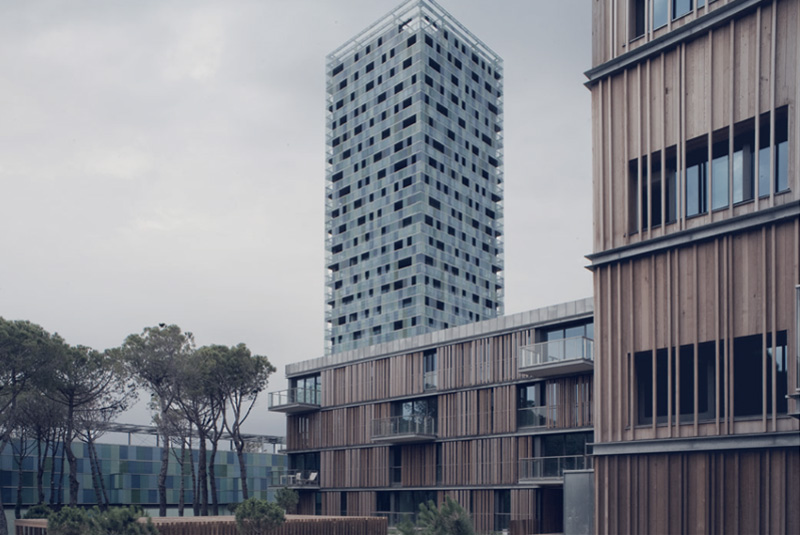
Path in the park. Merville, House in the Park, Jesolo (VE)
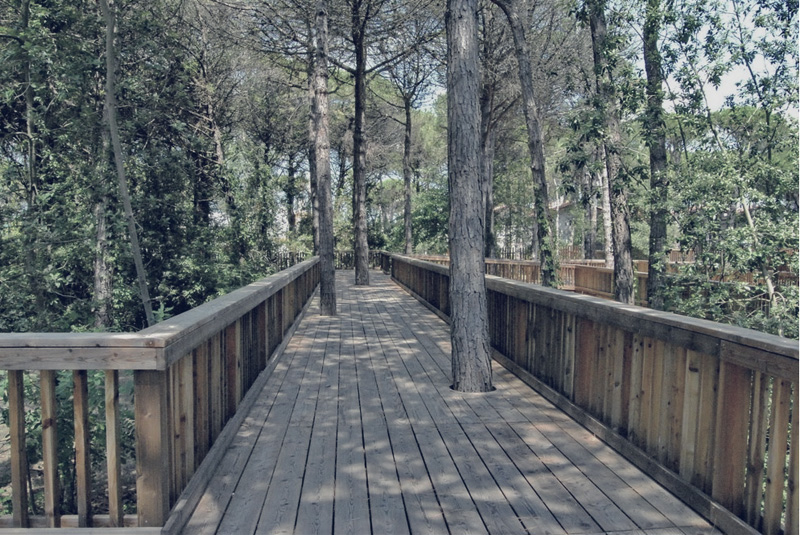
View of the buildings in the park with their cantilevered metal terrace system and mobile sunshades
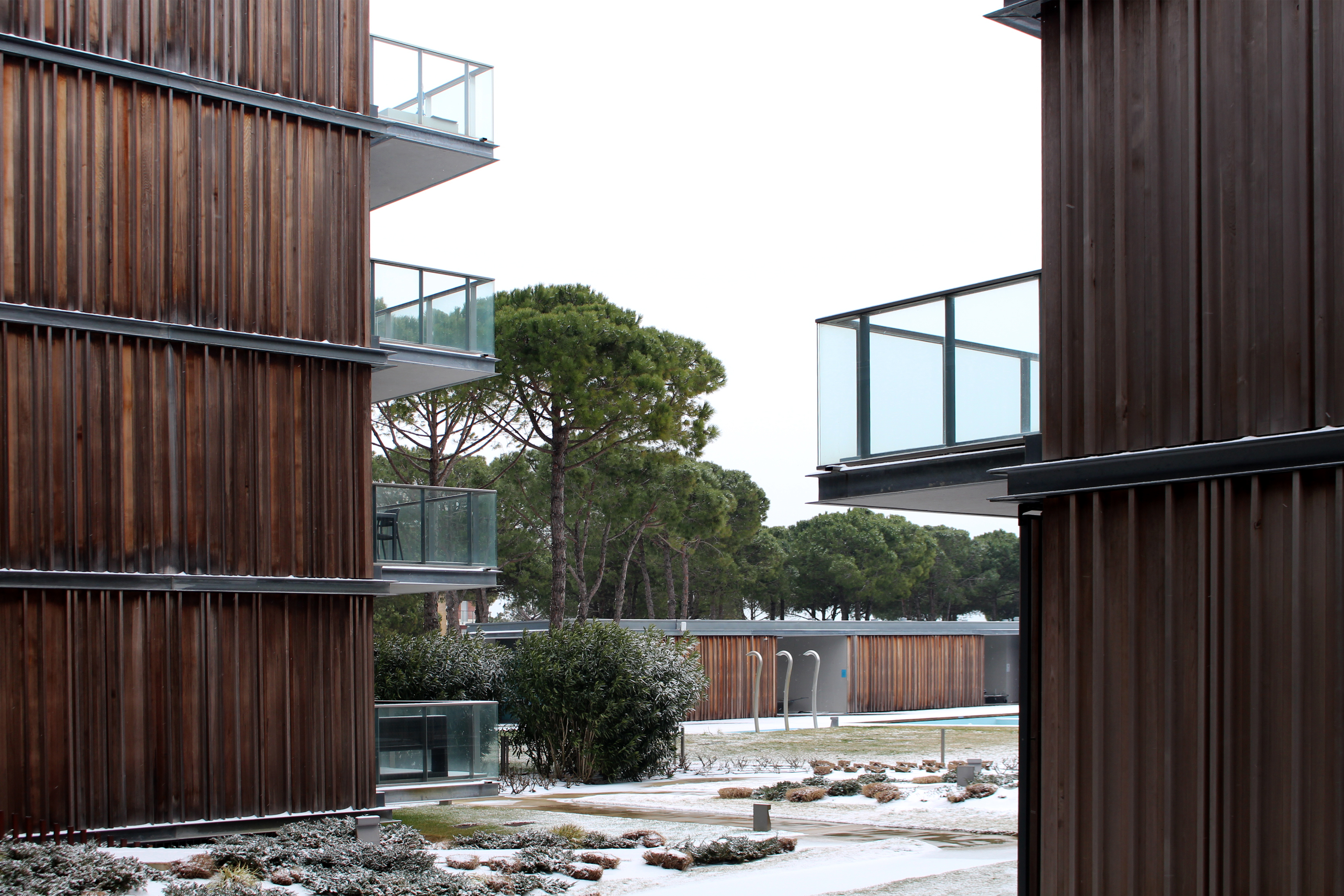
Detail of the sliding wooden cladding system applied to the cantilevered terraces.
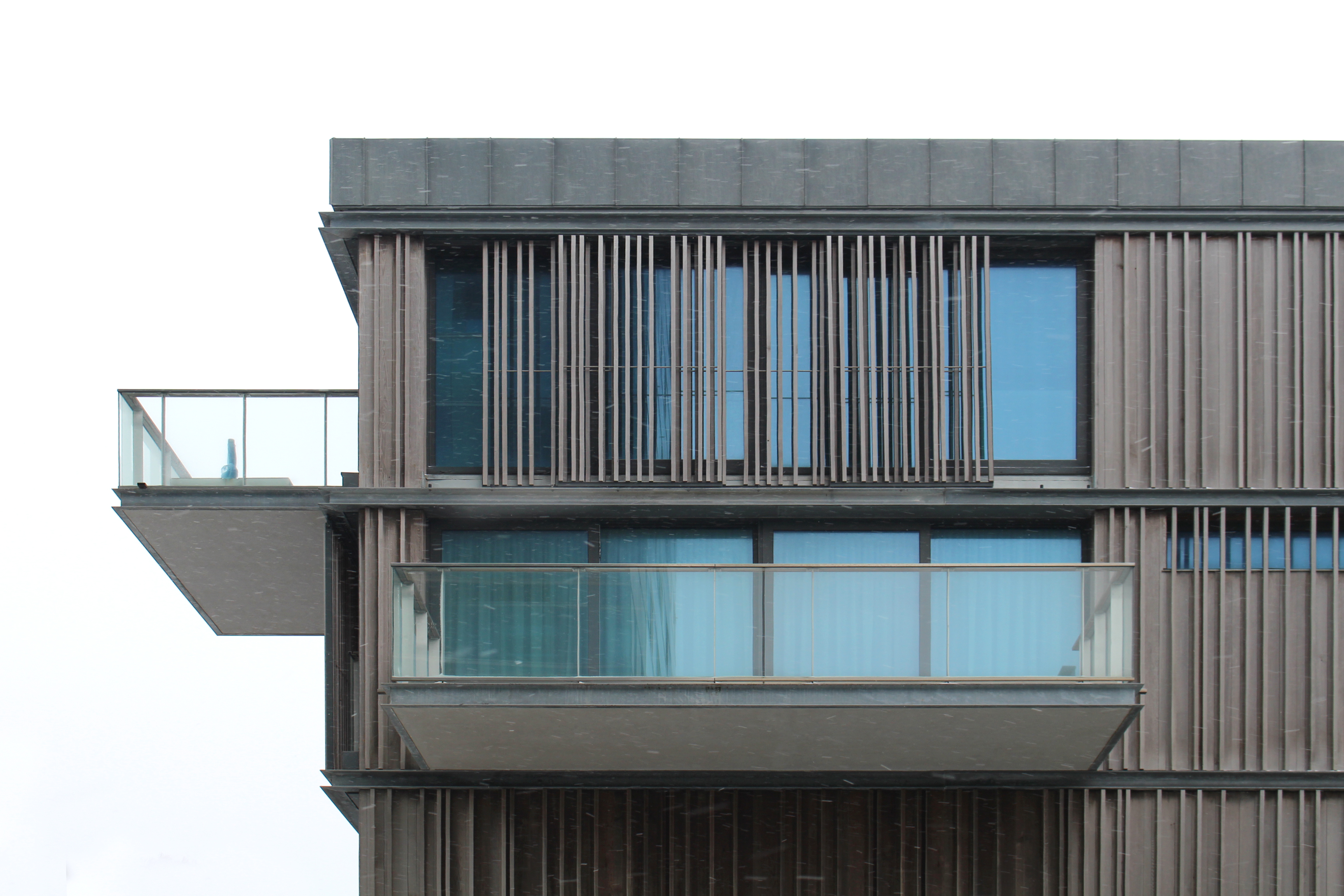
The complex, surrounded by greenery, is further enhanced by the presence of 3 residential buildings with simple and sinuous volumes, which establish a harmonious dialogue with the surrounding nature thanks to the loggias and panoramic terraces.
The House in the Park, to date, represents an iconic image of the city, characterizing the skyline with its colors and its fascinating transparencies.
The paths in the park respect the texture of the existing vegetation by integrating the new pedestrian flows with the presence of the centuries-old pine trees of the Venetian pine forest.